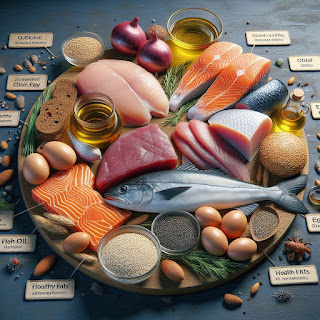The Ultimate Guide to Cat Food:
What Every Cat Owner Needs to Know
As a cat owner, choosing the right food for your feline friend is one of the most important decisions you can make. With countless options available, it can be overwhelming to determine what will best support your cat’s health and well-being. In this article, we’ll explore the essentials of cat food, including types of diets, key ingredients, and tips for making informed choices. Let’s ensure your furry companion enjoys a nutritious and balanced diet!
Understanding the Different Types of Cat Food
Dry Cat Food (Kibble): Dry food is convenient, affordable, and helps keep your cat’s teeth clean. However, it often contains less moisture, which may not be ideal for all cats, especially those prone to urinary issues.
Wet Cat Food (Canned): Wet food is high in moisture content, making it an excellent choice for hydration and palatability. Many cats find wet food more appealing, which can encourage them to eat.
Raw Cat Food: Some owners choose to feed their cats a raw diet, which mimics what cats would eat in the wild. While raw diets can be beneficial, it’s essential to ensure they are balanced and safe, as improper handling can lead to health risks.
Specialty Diets: For cats with specific health issues, specialty diets may be necessary. These can include formulas for weight management, kidney health, or sensitive stomachs. Always consult your veterinarian before making dietary changes.
Key Ingredients to Look For
When selecting cat food, pay attention to the ingredient list. Here are some key components to consider:
High-Quality Protein: Cats are obligate carnivores, meaning they require protein from animal sources. Look for foods that list a high-quality protein source, such as chicken, turkey, or fish, as the first ingredient.
Healthy Fats: Fats provide essential fatty acids and are crucial for energy. Omega-3 and Omega-6 fatty acids support skin and coat health, so look for food that includes fish oil or chicken fat.
Minimal Fillers: Avoid foods with excessive fillers like corn, soy, or by-products. These ingredients provide little nutritional value and can contribute to weight gain.
Added Nutrients: Essential vitamins and minerals, such as taurine (critical for heart health), vitamins A, D, and E, and minerals like calcium and phosphorus, should be included in your cat’s diet for overall health.
Transitioning to a New Cat Food
If you’re considering changing your cat’s diet, it’s essential to do so gradually. Sudden changes can upset your cat’s digestive system. Follow these steps for a smooth transition:
Start Slowly: Begin by mixing a small amount of the new food with the current food. Gradually increase the proportion of the new food over several days.
Monitor Your Cat: Keep an eye on your cat’s reaction to the new food. Look for signs of digestive upset, such as vomiting or diarrhea, and consult your veterinarian if you notice any issues.
Be Patient: Some cats may be more finicky than others. If your cat refuses the new food, try different flavors or brands until you find one they enjoy.
Common Myths About Cat Food
There are many misconceptions about cat nutrition. Here are a few myths debunked:
Myth: Cats can thrive on a vegetarian diet. While some cats may tolerate a vegetarian diet, they are obligate carnivores and require animal protein for optimal health.
Myth: All grain-free diets are better. Grain-free diets aren’t necessary for all cats. In fact, some cats can benefit from grains, as they provide fiber and nutrients.
Myth: Cats can self-regulate their food intake. Cats may not always self-regulate, leading to overeating or obesity. Regular portion control is essential.
Conclusion
Choosing the right cat food is crucial for your feline’s health and happiness. By understanding the different types of cat food, key ingredients to look for, and how to transition diets, you can make informed choices that support your cat’s well-being. Remember to consult your veterinarian for personalized recommendations based on your cat’s specific needs.







